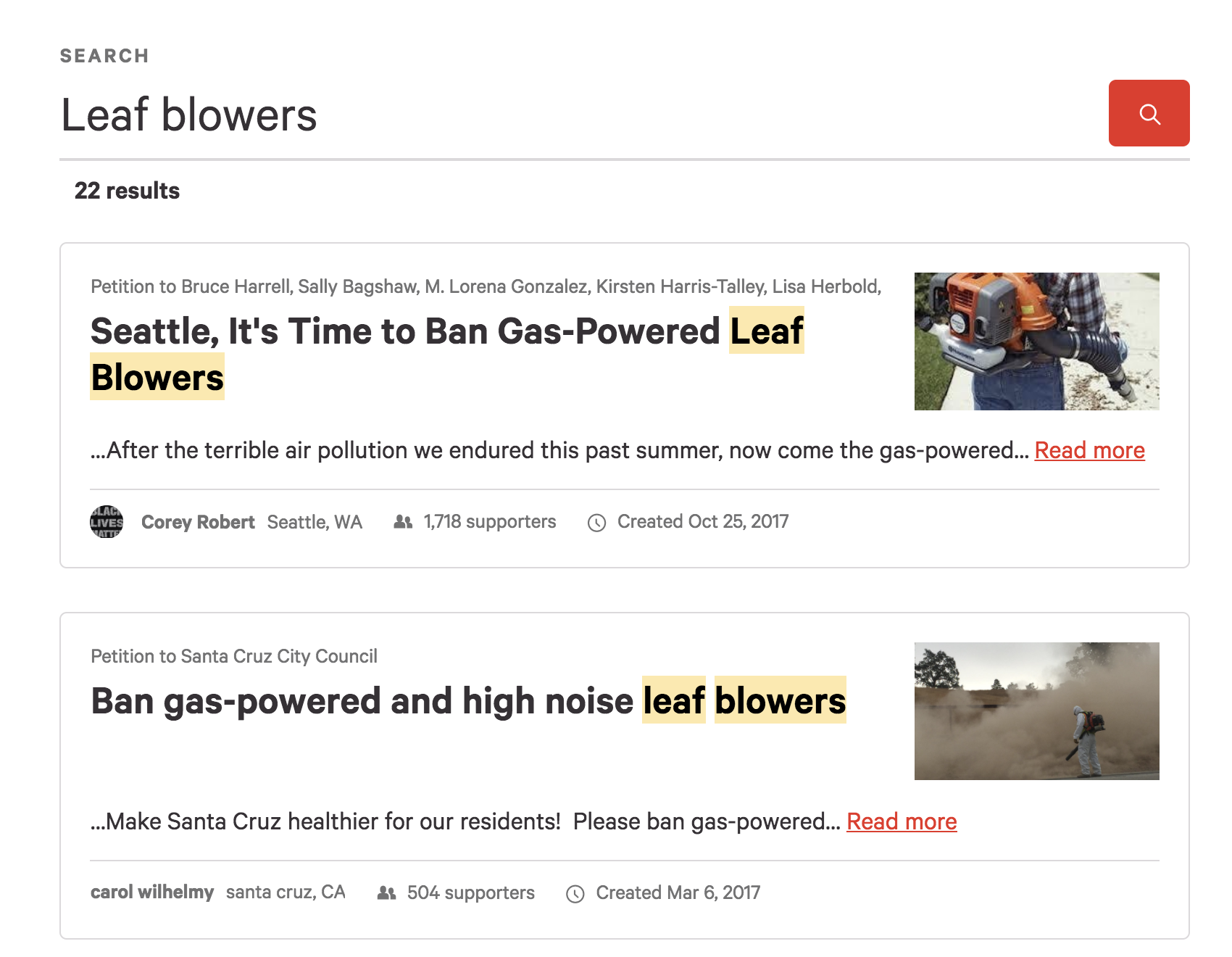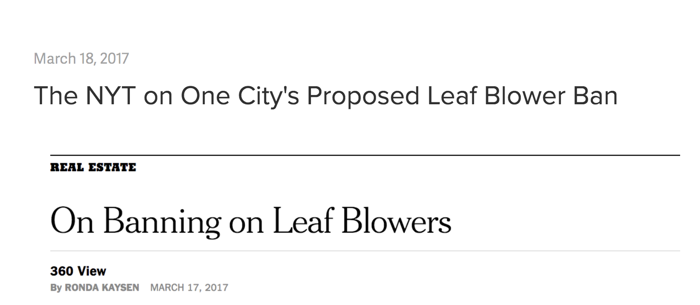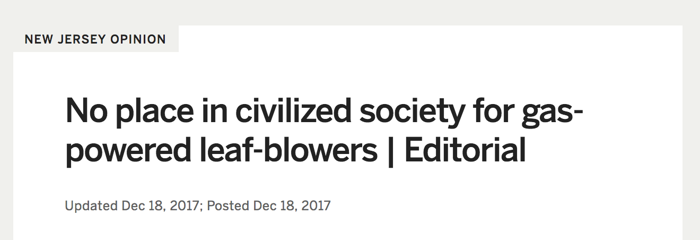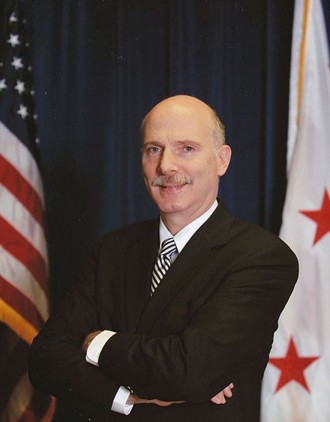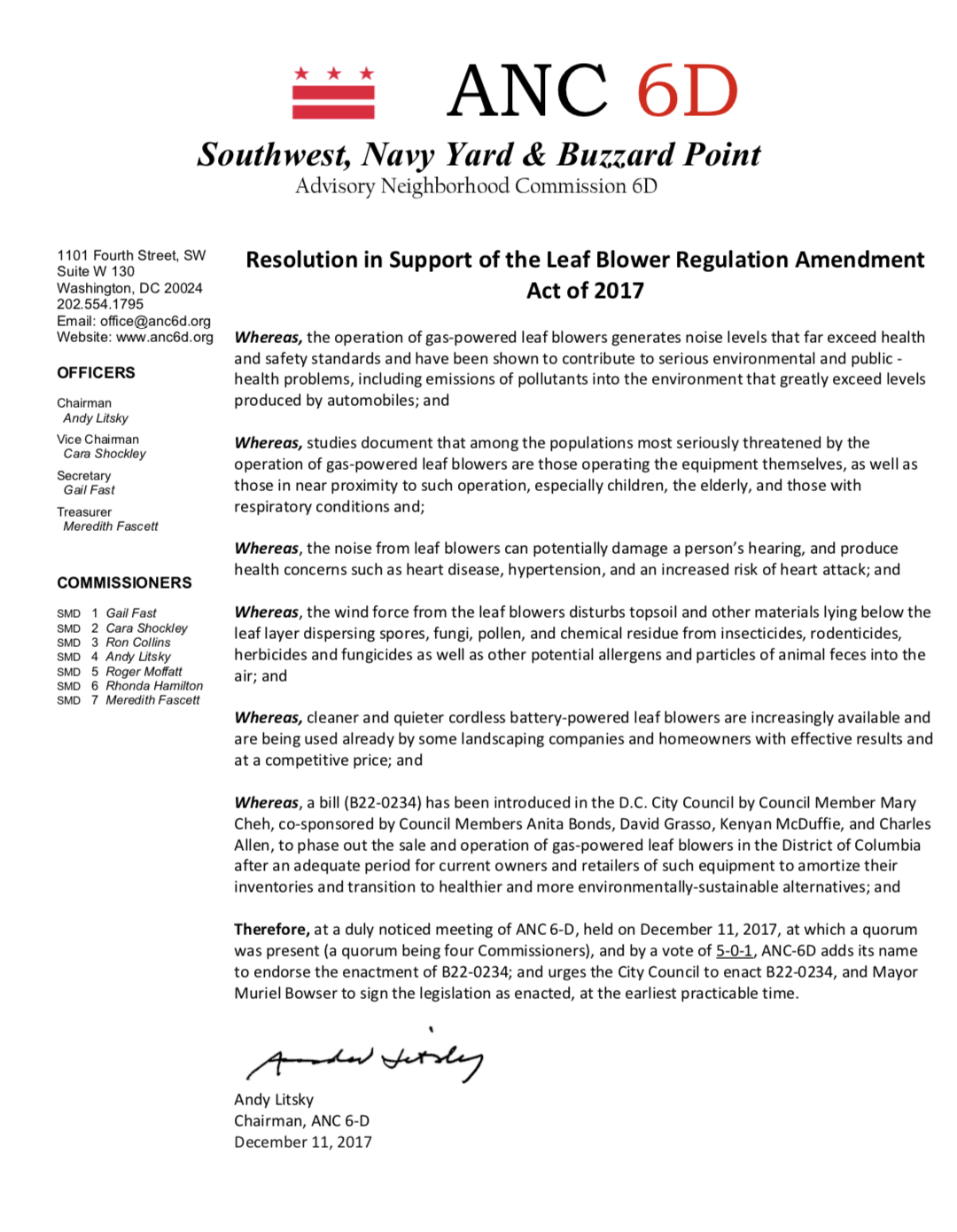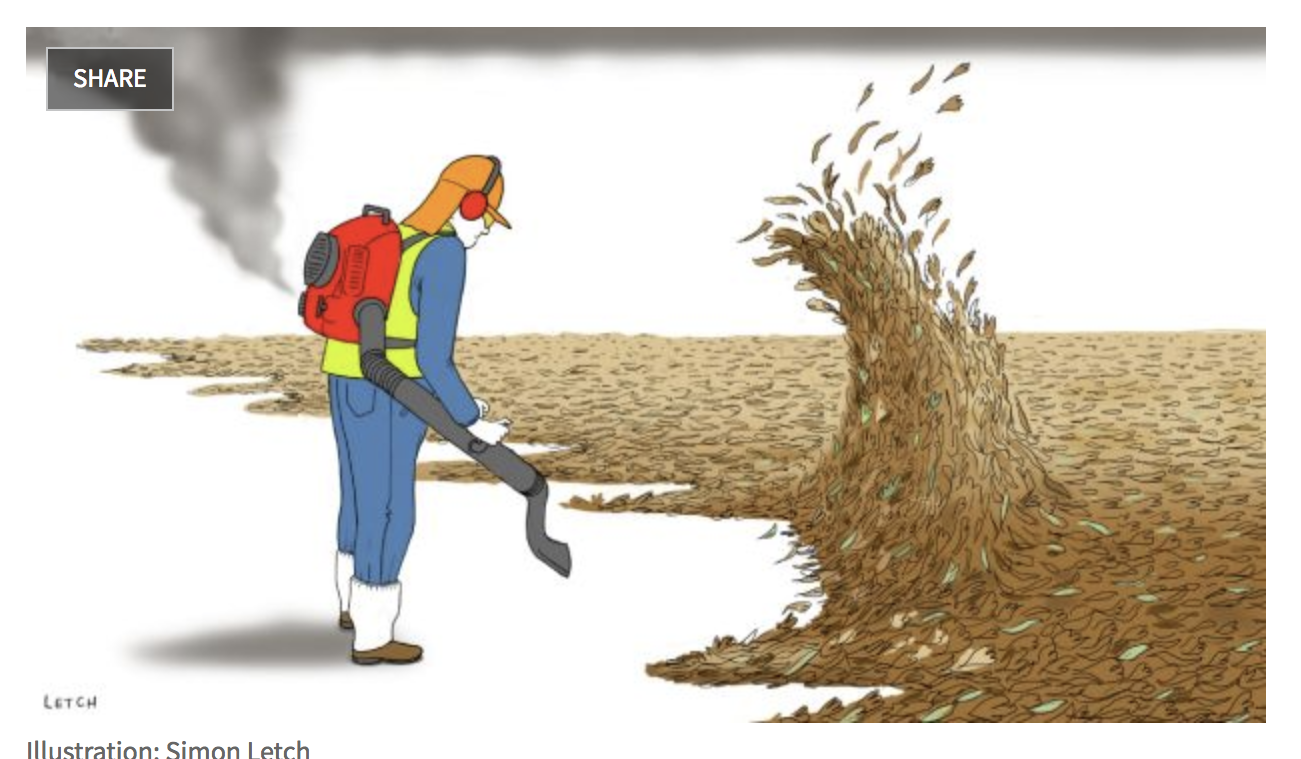Through the past three years, this site has reported on the progress of legislation to phase out noisy, obsolete, hyper-polluting gas-powered leaf blowers in the nation's capital city, and to phase in quiet, clean battery-powered equipment.
Council Member Mary Cheh has introduced legislation to that effect; Advisory Neighborhood Commissions across the District have endorsed it; and a majority of City Council members have indicated their support.
The crucial next stage of "how a bill becomes a law" was for hearings on the bill by the Council's "Committee of the Whole," whose membership includes the full Council (but which, for procedural reasons, must consider the bill before the whole Council does).
Those hearings, over which Council Chair Phil Mendelson presided, took place on the afternoon of July 2, 2018. As Council members themselves observed, they turned out to be an entirely lopsided contrast of perspectives.
On the pro-bill side, witnesses produced brand-new and significant acoustic evidence, showing that the sound properties of noise from gas-powered blowers were fundamentally different from those of the battery models, and in a way that made their noise far more disturbing and damaging. (Short version: the gas-powered models produce dramatically greater spikes of low-frequency sound waves, which seems as if would be less annoying than a high-frequency whine. But in fact low-frequency waves travel much greater distances than high-frequency sound waves, and can penetrate walls and windows. The US Navy uses ultra-low-frequency waves to communicate with its submarines when they are beneath the surface, precisely because these waves can travel so far.)
Thus if a gas- and a battery-powered blower have the "same" loudness rating, say of 75 decibels, the gas-powered blower is in fact far louder. The difference is much like the role of humidity in summer weather readings: an 88F degree day in Washington DC, with sweltering humidity, feels much hotter than an 88F degree day in Denver, with bone-dry air. As one expert, Dr. Jamie Banks of Quiet Communities, testified, the noise footprint of a gas-powered leafblower can cover a vastly greater area of a neighborhood than that of a "similarly" loud battery-powered blower. Her testimony explains the significance of the graph below:
The owners of some lawn-maintenance companies also testified for the bill, saying that they had successfully switched their businesses to battery-powered operations. A leading technology writer said that all previous clean-tech legislation, whether it was the switch away from leaded gas or the ban on DDT, had met initial industry opposition as being "impractical," "bad for business," and "intrusive." But after it took effect, people asked, Why did we wait so long?
Citizens and representatives of neighborhood groups talked about the effect that rising levels of ambient noise had on community life and personal health. A career lawn-care worker described the way exposure to gas-powered leaf blowers had deprived him of his hearing.
For their part, the two industry-lobbyist representatives made points that their counterparts have made for decades. One was that the proposed shift would be ruinously expensive for lawn-care companies--despite the testimony of real-world gardening companies that have already made the change successfully. The other was that the "solution" to the problem was "better education" of lawn crews for more "courteous" use of their equipment, a claim for which the lobbyists could offer no real-world evidence (since none exists).
The whole transcript is available now, so you can judge for yourself. Over the two weeks after the hearing, until a July 16 deadline, the Council's record stayed open for supplemental statements. A large number of those arrived, and they'll be presented, in indexed form, in the next few days on this site.






